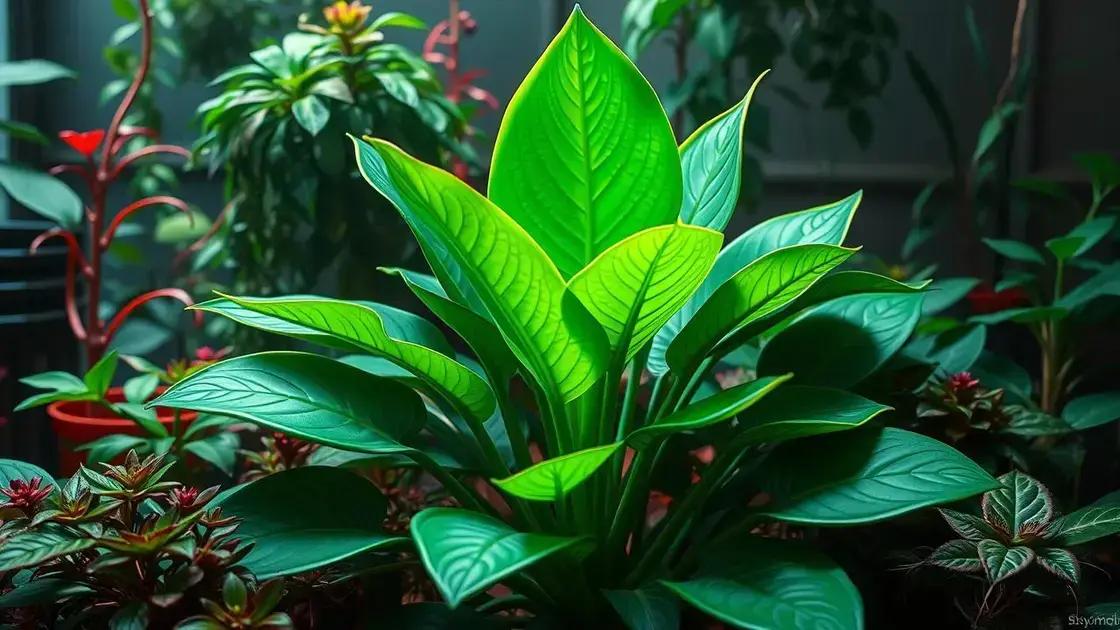How to Care for a Pilea Plant: 7 Essential Tips for Thriving Growth
How to care for a pilea plant properly can be a rewarding journey for any plant lover. Understanding its unique needs helps unlock its full potential, making your indoor space feel vibrant and lush. Discover how a few simple practices can enhance your pilea’s health and aesthetics.
Table of Contents
ToggleWatering techniques for your pilea plant
Watering techniques for your pilea plant can make all the difference in keeping it healthy and vibrant. Understanding the specific needs of your pilea will help you create the right watering schedule.
Establishing a watering routine
- Check moisture: Always feel the top inch of the soil; if it’s dry, it’s time to water.
- Frequency: Generally, watering once a week is ideal, but it may vary based on your indoor climate.
- Time of day: Watering in the morning allows the plant to absorb moisture before evening.
Watering quantity
How much water should you give your pilea? Proper quantity ensures the roots stay hydrated without drowning. Here’s a simple guideline:
- Use enough water until it drains out of the bottom holes of the pot.
- Ensure draining: Overwatering can lead to root rot, so let excess water escape.
Watering method
Consider how you apply water to your pilea. Here are some recommendations:
- Water evenly around the pot to encourage even root growth.
- Use room temperature water to prevent shocking the plant.
Signs of over or under-watering
Learn to recognize how your pilea reacts to its watering schedule:
- Drooping or yellowing leaves typically indicate overwatering.
- Dried-out leaves may signify that your plant needs more moisture.
Soil considerations
Ensure your pilea plant is in well-draining soil to avoid moisture retention. A mix designed for indoor plants is often best. You can explore soil options on platforms like exploring indoor gardening techniques for quality products.
Final tips
Keep these factors in check: humidity, temperature, and pot size can influence your watering practices. Monitor your pilea regularly to adjust its care as needed for optimal health.
Optimal light conditions for your pilea

Optimal light conditions for your pilea are essential for its healthy growth and vibrancy. Providing adequate light ensures that your pilea thrives in your indoor setting.
Understanding light requirements
Pilea plants prefer bright, indirect sunlight. Too much direct sunlight may scorch their leaves, damaging this beautiful plant. Consider the following factors when positioning your pilea:
- Natural light direction: East-facing windows provide gentle morning light.
- Distance from windows: Place your pilea around 2 to 5 feet away from a sunny window.
- Seasonal changes: Adjust the location as light conditions change with the seasons.
Signs of inadequate light
Recognizing when your pilea isn’t receiving enough light is crucial. Keep an eye out for these signs:
- Leggy growth: Stretched stems and sparse foliage indicate the need for more light.
- Yellowing leaves: This can suggest a lack of adequate light exposure.
- Slow growth: Your pilea may not thrive if it isn’t getting enough light.
Adjusting light exposure
If your pilea isn’t getting enough light, here are some easy adjustments you can make:
- Move it closer to a light source to increase its exposure.
- Rotate the plant regularly to ensure it receives light evenly on all sides.
- Consider using grow lights during winter months or in poorly lit areas.
Recommended light sources
Using the right light sources can enhance the health of your pilea:
- Fluorescent bulbs: Affordable and energy-efficient option for indoor plants.
- LED grow lights: Bright and long-lasting lights that simulate natural sunlight.
- Avoid direct sunlight from south-facing windows: It can lead to leaf burn.
Final thoughts on light conditions
Monitor your pilea closely to assess its response to light changes. Adjust its placement or lighting conditions based on its needs for optimal growth. For more insights into choosing the right plant mix, consider exploring indoor gardening techniques to optimize your plant care.
Common issues and solutions for pilea care
Common issues and solutions for pilea care can help you maintain a healthy plant throughout its life cycle. By being aware of potential problems, you can ensure your pilea stays vibrant and lush.
Identifying common issues
- Drooping leaves: This can be a sign of either overwatering or underwatering.
- Yellowing leaves: Often indicates poor light conditions or nutrient deficiencies.
- Browning leaf tips: Usually related to low humidity or contact with direct sunlight.
- Pest infestations: Look out for pests like spider mites or aphids that affect growth.
Solutions for drooping leaves
When your pilea’s leaves start to droop, follow these steps:
- Check soil moisture: Water only if the top inch is dry.
- Assess drainage: Ensure that your pot has adequate drainage holes.
- Consider environmental stress: Evaluate humidity and temperature around the plant.
Addressing yellowing leaves
If your pilea’s leaves are turning yellow, here’s how to address it:
- Evaluate light conditions: Relocate the plant to a spot with bright, indirect sunlight.
- Fertilizer: Use a balanced houseplant fertilizer to supply necessary nutrients.
- Check for root issues: Ensure that the roots are healthy and the plant isn’t root-bound.
Managing browning leaf tips
To remedy browning tips, consider the following:
- Increase humidity: Use a pebble tray or humidifier to raise humidity levels.
- Adjust sunlight exposure: Move the plant away from direct sunlight.
- Regularly mist foliage: Ensure your pilea receives adequate moisture.
Combatting pest problems
To handle pests effectively, implement these strategies:
- Inspect regularly: Check the undersides of leaves for signs of pests.
- Natural remedies: Use neem oil or insecticidal soap as a treatment.
- Isolate infected plants: Keep them away from healthy plants to avoid spreading pests.
Final notes on pilea care
Understanding these common issues and their solutions ensures your pilea plant thrives in your care. If you’re looking for soil recommendations for optimal growth, check out exploring indoor gardening techniques for quality options.
In conclusion
Caring for a pilea plant can be a fulfilling experience when you understand its needs. By ensuring your pilea receives the right amount of light, water, and attention, you can enjoy its vibrant foliage for years to come. Remember to monitor for common issues and apply the effective solutions we’ve discussed. For additional guidance, consider the tips on enhancing your indoor garden to provide the best environment for your growing plants.

